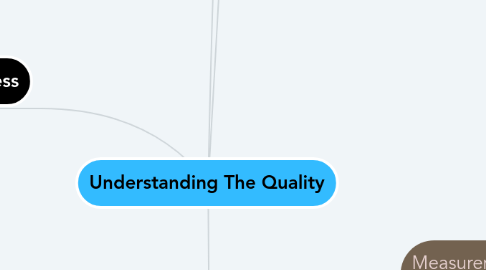
1. Design Process
1.1. Purpose To guarantee that the development of the product continues and meets the goals.
1.2. Steps of Design Process
1.2.1. 1.Define the problem
1.2.2. 2. Conduct research
1.2.3. 3. Brainstorm and conceptualize
1.2.4. 4.Create a prototype
1.2.5. 5. Build and market your product
1.2.6. 6.Product analysis
1.2.7. 7. Improve
1.3. Meaning It consists of a series of steps to produce a solution to a problem. It is project management guide for the execution of a project.
2. Design Innovation and Improvement
2.1. Innovation An organization updates, changes, and improves its internal processes, manufacturing techniques, and management methods. Also, Innovations help introduce new concepts, knowledge, products, services, and processes into organizations and the outside marketplace.
2.1.1. Process Innovation A new strategy or system in manufacturing and delivering the product for competency and long-term success.
2.1.2. Product Innovation A new feature or replacement of the current product which works efficiently and more sustainable
2.2. Improvement It’s a method to improve the production process which means to eliminate any losses in a systematic way.
2.2.1. Criterion for Innovation: 1.meeting customer needs 2.satisfying expense 3. return on employment investment 4.employee satisfaction 5.product quality
2.2.2. Process of Improvement: 1.Identify the problem 2.Analyze problem 3.Generate potential solutions 4.Select plan and solution 5.Test the solution 6.Evaluate test implementation 7.Implement system wide
2.2.2.1. 1.Identify the problem 2.Analyze problem 3.Generate potential solutions 4.Select plan and solution 5.Test the solution 6.Evaluate test implementation 7.Implement system wide
3. Design for Quality and Performance
3.1. Dimensions for Quality and Performance
3.1.1. QUALITY OF CONFORMANCE- meeting the standards defined in the design phase after the product is manufactured or while the service is delivered.
3.1.2. QUALITY DESIGN- it is a set conditions that the product or service must minimally have to satisfy the requirements of the customer.
3.1.3. QUALITY OF PERFORMANCE-how well the product functions or service performs when put to use.
3.2. Critical Dimensions of Product Quality
3.2.1. PERFORMANCE- (will the product do the intended job in field) It is the evaluation of product or service performance with respect to certain specific functions and how well it performs from customer’s perspective.
3.2.2. RELIABILITY -(how often the product can fail within a stipulated time) It is the probability of not failing of components of automobiles or airbus while on service for a specified time period.
3.2.3. DURABILITY- (how long can the product last) The effectiveness life of the product
3.2.4. SERVICEABILITY -(how easy is it to repair the product) Customer's view on quality is also influenced by how quickly and economically a repair or routine maintenance activity can be accomplished.
3.2.5. PERCEIVED QUALITY- (what is the customer’s feeling about the product after intended use) The impression of the customer after using the product and/or service.
3.2.6. AESTHETICS- (how appealing does the product look like) This visual appeal of the product, often taking into account factors, such as style, color, shape, packaging, tactile characteristics, and other sensory features.
3.2.7. FEATURES- (value or what does the product can actually do) The customers tend to purchase products that have more value added features.
3.2.8. CONFORMANCE TO STANDARDS (is the product made exactly as the designed )
3.2.8.1. ASPECTS OF CONFORMANCE TO STANDARDS
3.2.8.1.1. 1. Defect detection 2. Defect root cause analysis 3. Defect prevention
3.2.9. SERVICE QUALITY Service is an experience felt by the consumer
3.2.9.1. Five (5) dimensions of Service Quality
3.2.9.2. RESPONSIVENESS: the time taken by a service provider to respond to request.
3.2.9.3. RELIABILITY: the dependability of customers on specific service.
3.2.9.4. ASSURANCE: This dimension of service quality is related to the competence of the service employee.
3.2.9.5. TANGIBLE: Related to the surroundings in which the service is provided to the customers.
3.2.9.6. EMPATHY A caring attitude that an organization shows toward customer
